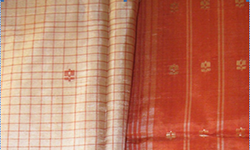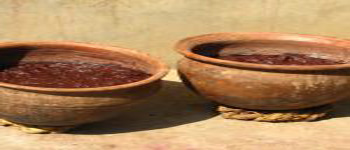
Art history/ Historiography, Crafts, Handlooms, Art, Environment, Ecology, Compliance
Aadi Fibres: Fibres of the Futures Past
Turaga, Janaki
Issue 03,Autumn 2019
Issue #003, Autumn, 2019 ISSN: 2581- 9410
"Do you know that there are Naara pattu sarees and dhotis made of plant fibres, as described in our Puranas and Ramayana in coastal Andhra Pradesh?" Flummoxed by this question of my aunt Smt. Gotety Hymavati, I asked her for more details, and am introduced to a little known world of esoteric little and micro traditions of textiles based on bast fibres (fibres of the inner bark which surrounds the woody stem of numerous plants). The very name and meaning of these traditions is intriguing. Naara pattu means a fibre that is like silk- naara means plant fibre, while pattu means silk. I plunged into historical documents and textile history sources to know more about this intriguing and fascinating textile tradition. There was little information that was available and it became apparent that these diverse bast fibre clothing traditions had been overlooked. But these were living traditions and bast fibre clothing was used by people at least until mid 20th century CE. Hence, oral history became a very important and the only source that could give any information about bast fibre micro textile traditions. Where were these produced, who consumed them in what contexts, what was their place in the clothing traditions, were questions that were explored in my study (which is ongoing).There was documentation of the utility products made from bast fibres from British colonial times. This focused researc...
This is a preview. To access all the essays on the Global InCH Journal a modest subscription cost is being levied to cover costs of hosting, editing, peer reviewing etc. To subscribe, Click Here.



